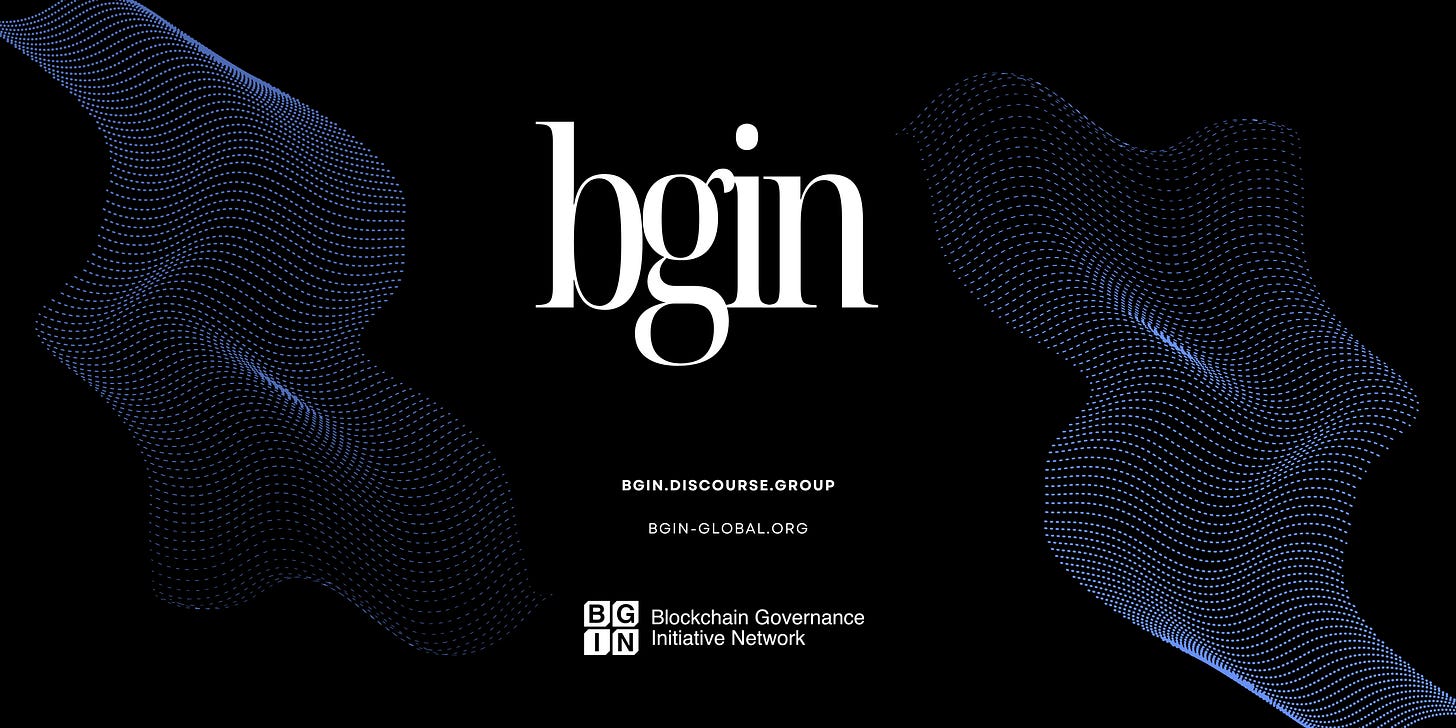The Evolution of Money is Ongoing and Will Take Many Forms
BGIN Block 10 Insights
In Tokyo, 2024, the Blockchain Governance Initiative Network had its 10th meeting.
These insights are condensed to share as a sync with the greater community.
Join the forum conversation by the bgin.discourse.group.
Our working groups meet online, every two weeks, and discuss the most pressing subjects relating to;
Identity Key Management and Privacy (IKP) Working Group
Financial Applications & Social Economics (FASE) Working Group.
In an age where the boundaries of money are being redrawn, a recent session brought together a diverse group of industry experts and enthusiasts to explore the evolving interface between digital and traditional currencies. This article delves into the insights and discussions from that session, shedding light on the complexities and potential of our financial future.
The Emergence of New Currency Forms
At the heart of the discussion was the exploration of various forms of currency that are shaping the future of finance: central bank digital currencies (CBDCs), deposit tokens, stablecoins, and cryptocurrencies. The emergence of these digital assets marks a significant shift in our understanding of money, highlighting the critical role of trust and regulatory frameworks in facilitating their acceptance and utility. There is an inevitable push and pull when considering how to navigate new forms of money, considering on one side, especially at present, we are seeing the proliferation of day-old memecoins and, on the other, discussions surrounding large-scale CBDCs projects.
Deconstructing Stablecoins
A significant part of the dialogue focused on stablecoins, which, despite their name, embody a complex array of functionalities and potentials that extend beyond stability. The debate underscored the necessity for clearer terminology and classification, pointing to a gap in the current discourse that often oversimplifies the intricate nature of these digital assets.
Legal Complexities in the Digital Domain
As we navigate through the digital transformation of currency, legal challenges emerge as pivotal considerations. The transition from traditional property rights to contractual relationships within the digital realm introduces a new layer of complexity. This evolution requires a nuanced understanding of legal frameworks to ensure the integrity and security of digital transactions.
Implications for the Financial Industry
The potential of digital currencies to revolutionize the financial industry was a recurring theme. From acting as an inflation hedge to enhancing the efficiency of global transactions, the implications are vast. However, the discussion also brought to light the pressing issue of privacy concerns. Balancing the need for regulatory transparency with the preservation of user privacy remains a critical challenge in the widespread adoption of digital currencies.
The Role of Decentralized Finance (DeFi) and Web3
The integration of decentralized finance (DeFi) and Web3 technologies with traditional financial systems opened up a fascinating debate on the future of finance. This segment of the conversation highlighted the innovative potential of DeFi, while also acknowledging the regulatory challenges it poses. The discussion emphasized the need for a harmonious coexistence between innovative decentralized platforms and the regulatory and monetary policy objectives of traditional financial institutions.
Non-Fungible Tokens (NFTs) and Their Expanding Role
Non-fungible tokens (NFTs) were discussed as more than just digital art; they represent a significant shift towards bridging virtual and real-world assets. While their role as a mainstream form of payment remains uncertain, the value and utility of NFTs in representing ownership and creating digital brand value were widely recognized.
Looking Ahead: Compliance, Technological Upgrades, and Regulation
As the session concluded, the focus shifted towards the future development of new forms of money. The need for compliance with regulatory standards, technological advancements, and a balanced regulatory approach was identified as critical. The diverse perspectives within the digital currency space, reflecting both speculative and non-speculative interests, underscore the complexity of navigating this evolving landscape.
The discussions from the session paint a picture of a financial future where innovation, clarity in regulation, and technological progress are key drivers. The journey towards integrating digital and traditional currencies is not without its challenges. However, it is clear that through collaboration, innovation, and a commitment to regulatory clarity, we can navigate these complexities and shape a future where digital and traditional currencies coexist, enriching our financial ecosystem.
As we stand at the cusp of this new era in finance, the insights from this session provide a valuable framework for understanding the dynamic landscape of digital and traditional currencies. The evolution of money is ongoing, and the discussions and debates that arise from sessions like these are vital in guiding us towards a more inclusive, efficient, and secure financial future.
In conclusion, the future of money is a multifaceted journey marked by the convergence of technological innovation and traditional financial practices. By embracing this evolution with an open mind and a collaborative spirit, we can ensure that the financial systems of tomorrow are built on a foundation of inclusivity, innovation, and security. The path forward is complex, but with continued dialogue and collaboration, we can navigate the future of money, unlocking new possibilities for the global economy.



